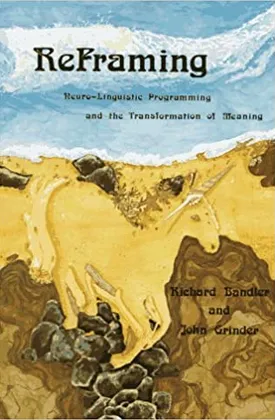John Grinder
John Grinder is an American author, psychotherapist, and linguist, best known for his contributions to Neuro Linguistic Programming (NLP). He is the co-creator of NLP alongside Richard Bandler and co-author of the influential 1975 book, The Structure of Magic I: A Book about Language and Therapy. Grinder is a highly respected figure in the world of psychology and therapy, credited with pioneering major advances in the field that rose to prominence in the 1970s and beyond.
His early life and formative education
John Grinder began his life in upstate New York, growing up in a middle class family that placed strong importance on education and hard work. He excelled in academics and was inducted into Phi Beta Kappa at the University of California-Santa Cruz, where he received his bachelor's degree in 1965. He then completed doctoral studies in linguistics at the University of California-San Diego, graduating in 1970 with a PhD.
The development of NLP, and The Structure of Magic I
During his doctoral studies, Grinder was introduced to the early concepts of NLP, which was being researched by Richard Bandler at Stanford University at the time. Grinder was intrigued by the notion of a “learning strategy”, where Bandler and his assistant, Frank Pucelik, responded to client input in a more direct and literal way. Grinder and Bandler started working closely together, together forming the central theory and philosophy of NLP.
Grinder and Bandler released the highly successful book The Structure of Magic I: A Book about Language and Therapy in 1975. The book was – and continues to be – praised for its unique approach to therapy, combining linguistic elements, systems thinking and cybernetics. The book generated a significant following, and became a major influence on future generations of therapists, psychologists, and psychotherapists.
Utilizing General Semantics and Gestalt Therapy
In addition to NLP, Grinder was highly influenced by two major schools of thought – General Semantics and Gestalt Therapy. General Semantics, developed by Alfred Korzybski, is an approach to language and thought that hopes to understand how words are used in a literal or figurative sense. Gestalt Therapy, developed by Fritz Perls, emphasizes the reintegration of one’s thoughts, feelings, and perceptions in order to understand the whole person.
Grinder incorporated these two schools of philosophy in his work with NLP, and developed techniques such as “Reframing”, which stresses the importance of understanding context in order to be effective and non-judgmental in communication. This technique has been used in numerous therapeutic and educational contexts and is one of Grinder’s most enduring contributions to the field of psychotherapy and NLP.
Subsequent publications and continued influence
Following The Structure of Magic I: A Book about Language and Therapy, Grinder published more books on the subject of NLP. These include Frogs Into Princes (1976), Healer’s Art (1985), Whispering in the Wind (1991), and Reframing (1994).
Grinder’s theories and techniques continue to be highly respected and influential in the field of psychotherapy and therapy. His contributions to NLP are seen as having a major impact on the field, and many of his techniques and strategies are still used in therapy today. In short, John Grinder’s legacy will remain long after his death, and his influence will continue to be felt by future generations of psychotherapists and researchers.

